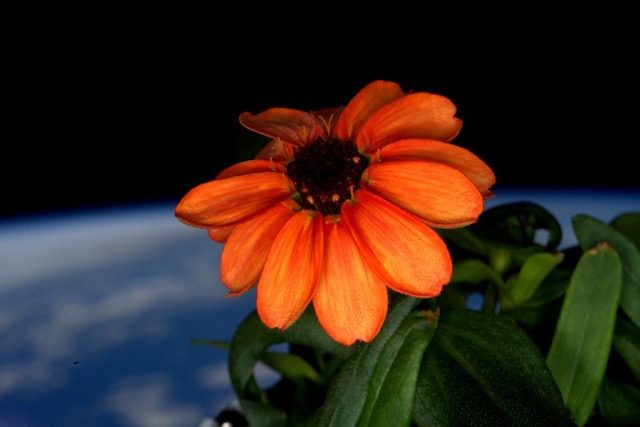SUMMARY
This is AI generated summarization, which may have errors. For context, always refer to the full article.

MANILA, Philippines – It looks like any other zinnia plant – green leaves, orange petals – photographed by an eager gardener after it has bloomed.
Except that it is not – it’s the first zinnia plant, or any other flowering plant for that matter, to have been successfully grown in space.
Astronaut Scott Kelly posted photos of the zinnia plant on social media Sunday, January 17, the product of weeks of tending to the plant aboard the International Space Station (ISS).
First ever flower grown in space makes its debut! #SpaceFlower #zinnia #YearInSpace pic.twitter.com/2uGYvwtLKr
— Scott Kelly (@StationCDRKelly) January 16, 2016
The plant was grown using the Veggie plant growth system, an experiment inside the ISS that aims to help figure out how to grow plants in space.
Veggie was initially activated back in May 2014, with lettuce as its first plant. Then in November 16, astronaut Kjell Lindgren “planted” – specifically, activated the system – with zinnia seeds.
The zinnia was selected, NASA said in its blog, because it “can help scientists understand how plants flower and grow in microgravity.”
In the two months since, the ISS astronauts tended to the plant, encountering a range of issues from too much water to a mold issue, to a ventilation fan that dried the plants too much.
For the zinnias to continue growing, Kelly, who has taken over the duties of caring for the plants after Lindgren returned to Earth, channeled his “inner Mark Watney,” a reference to the character stranded on Mars who had to grow his food in the movie The Martian.
By the first week of January, two of the plants died due to stress, while two others thrived. Eventually, on January 17, the first zinnia flower grown in space bloomed.
The zinnias, however, aren’t the last plants that will grow on the ISS: NASA said the next shipment of supplies to the space station will include two sets of Chinese cabbage and one set of red romaine lettuce. Dwarf tomato seeds are also being eyed by 2018.
The success in growing the zinnia plants in the ISS, as well as the lettuce plants before it, shows that there is potential for astronauts to grow plants on their own – a technology that could be useful for long-term missions, and perhaps one day, when humans colonize other planets.
Yes, there are other life forms in space! #SpaceFlower #YearInSpace pic.twitter.com/BJFWvQXmBB
— Scott Kelly (@StationCDRKelly) January 16, 2016
“Yes, there are other life forms in space!” Kelly said in another post. – Rappler.com
Add a comment
How does this make you feel?





There are no comments yet. Add your comment to start the conversation.